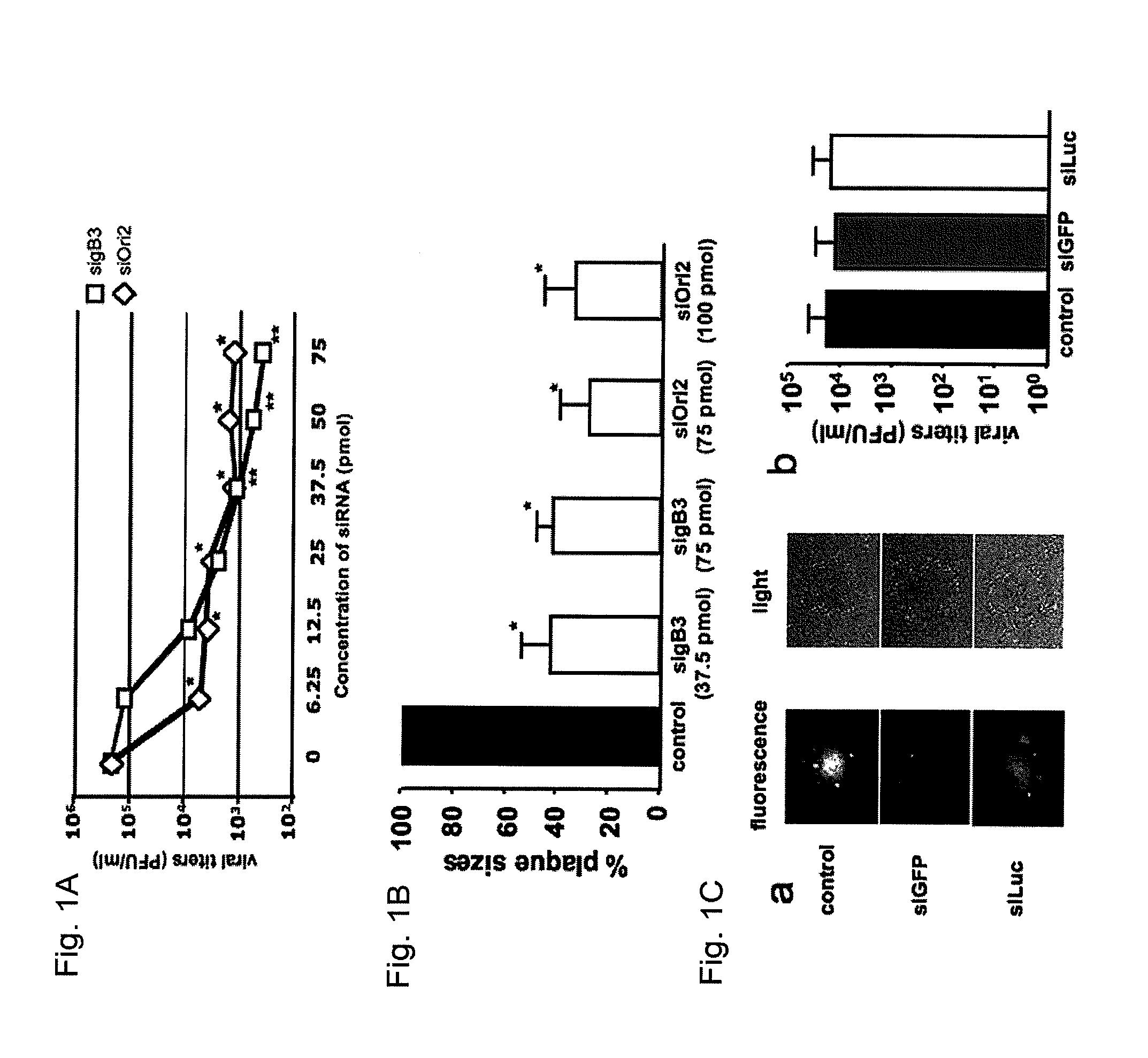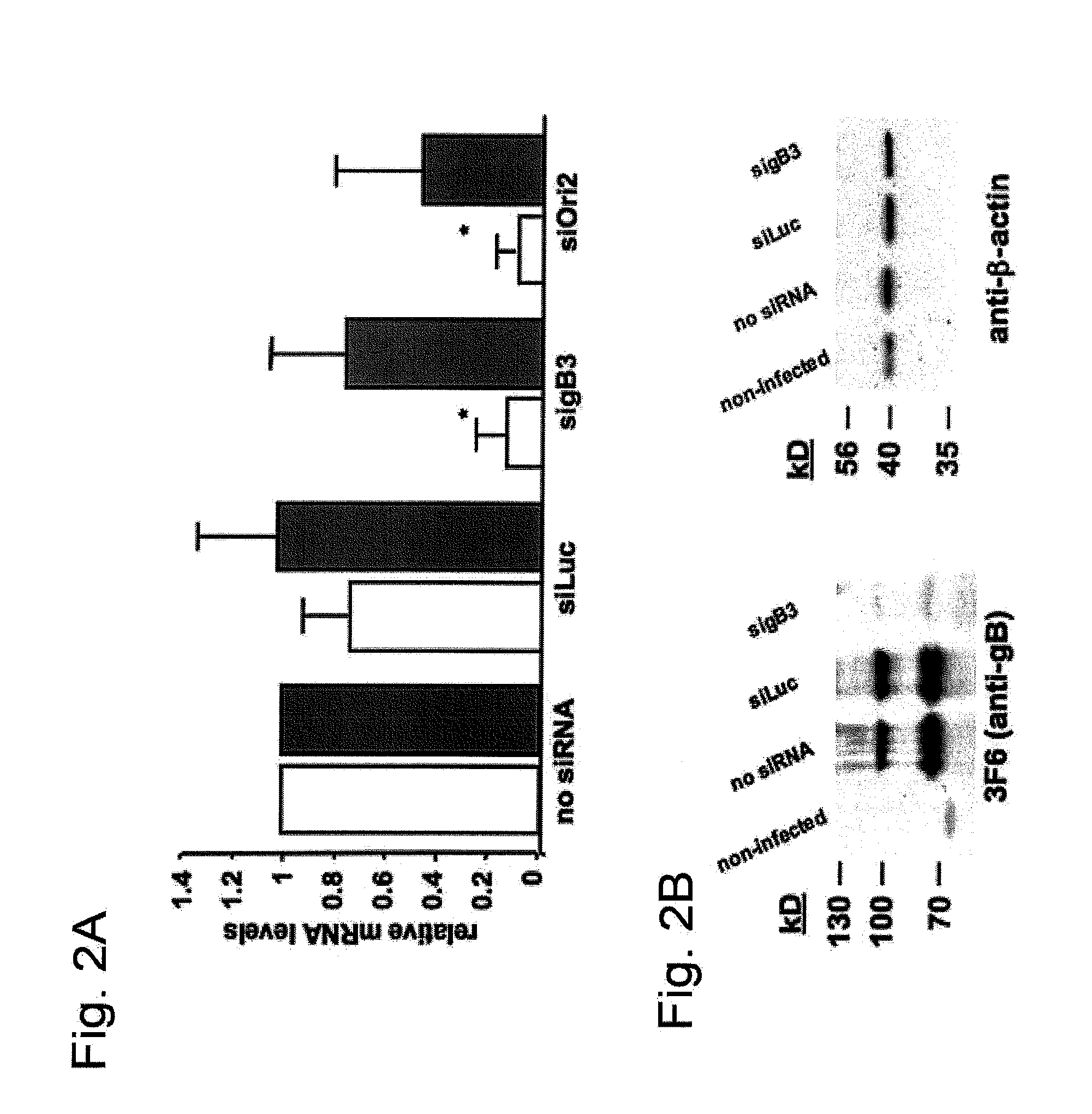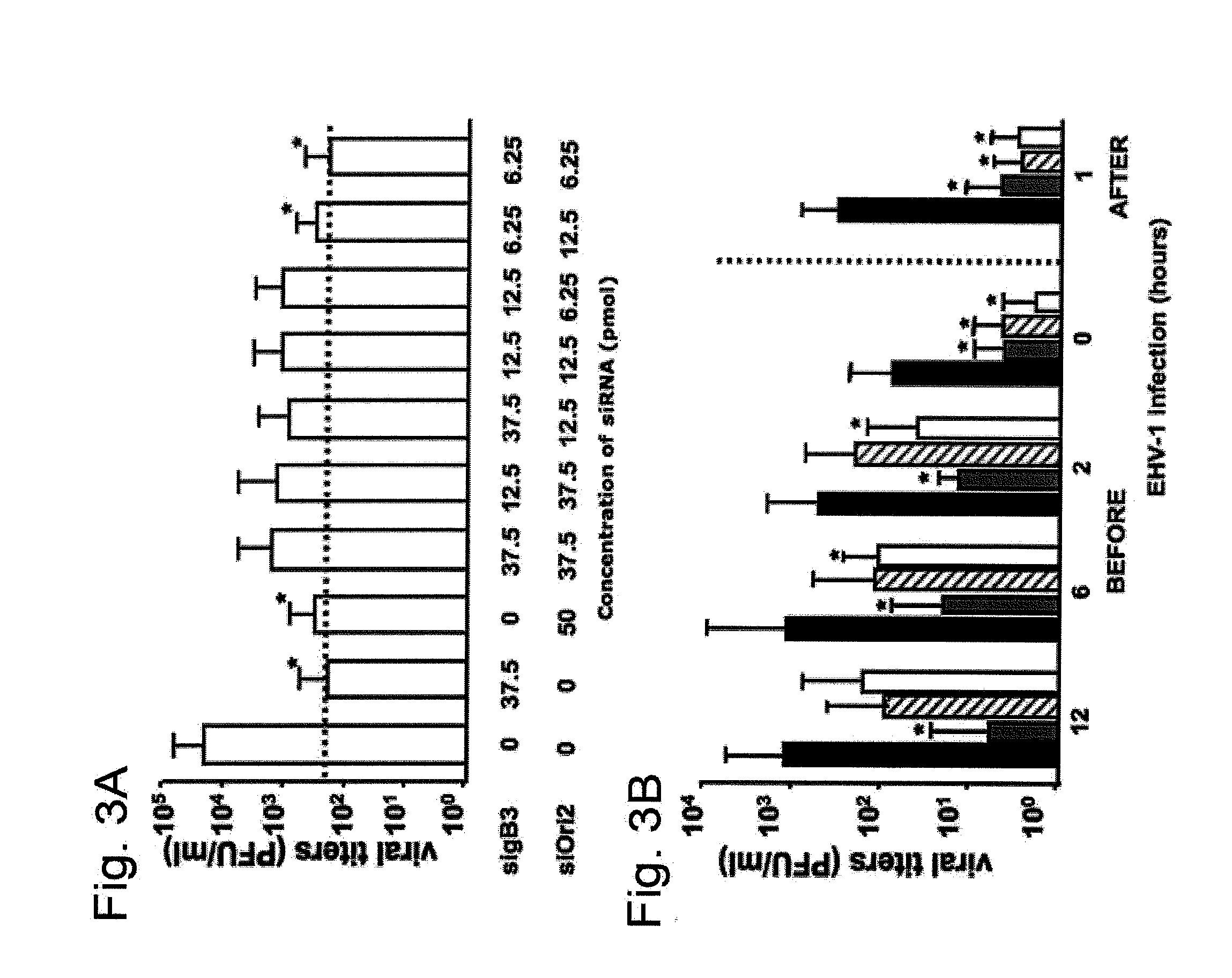Method for Prophylaxis and Treatment of Equine Herpesvirus Type 1 Infections
a technology of equine herpesvirus and prophylaxis, applied in the field of animal health, can solve the problems of high mortality rate, inability to demonstrate clinical efficacy of experimental antiviral drugs, and inability to detect and treat infections, so as to reduce the incidence and severity of neurological symptoms and reduce viral shedding
- Summary
- Abstract
- Description
- Claims
- Application Information
AI Technical Summary
Benefits of technology
Problems solved by technology
Method used
Image
Examples
example 1
[0041]This Example provides a description of the materials and methods used to obtain the results presented in Examples 2 through 5.
[0042]Cells, Viruses and siRNAs. Rabbit kidney (RK13) cells were maintained in minimum essential medium (MEM, Mediatech Inc.) supplemented with 10% fetal bovine serum (FBS), 100 U / mL penicillin and 0.1 mg / mL streptomycin (Mediatech Inc.), at 37° C. under 5% CO2 atmosphere. Wild type EHV-1 strain Ab4 and the eGFP-expressing rAb4Δgp2 were propagated in RK13 cells. The small interfering RNAs (siRNA's) against ORF33 (encoding gB) and ORF53 (encoding the helicase, Ori) were chemically synthesized (Ambion) based on the sequence of EHV-1 strain Ab4 (Genbank Sequence #AY665713) (Table 1).
[0043]siRNA Treatment and Virus Infection. Six-well plates of RK13 cells were treated with different concentrations of siRNA, ranging from 0 up to 75 pmol. The siRNA's were complexed with lipofectamine as per the manufacturers instructions (Invitrogen) and added to the cells in...
example 2
[0049]This Example demonstrates that treatment with siRNA targeting glycoprotein B or the origin-binding protein helicase is effective in reducing EHV-1 replication in vitro.
[0050]siRNAs directed against gB and On helicase were synthesized and evaluated for their effectiveness to reduce EHV-1 replication. sigB3 (see Table 1) directed against gB mRNA, efficiently reduced viral replication in a dose-dependent manner. A 10-fold reduction of viral titers was observed with as low as 6.25 pmol sigB3 (p<0.05) and reached a steady-state level starting at 37.5 pmol with up to a 100-fold reduction in viral titers (p<0.01) (FIG. 1A). Treating cells with SiOri2 (see Table 1), directed against the Ori helicase mRNA, resulted in a 50-fold reduction in viral titers, at a concentration ranging between 37.5 and 75 pmol (p<0.05). Furthermore, these siRNA's were also able to significantly reduce plaque sizes, with up to a 60% reduction in total plaque area when 37.5 pmol sigB3 or 75 pmol SiOri2 was us...
example 3
[0055]This Example demonstrates that treatment with siRNA targeting gB3 and SiOri2 has a greater than additive effect on reduction of EHV-1 replication in vitro.
[0056]For this Example, we repeated the treatment described in Example 2, but used combinations of the two siRNA's. When applied together, gB3 and SiOri2 showed the same effectiveness in reducing EHV-1 infectivity, but at a much lower concentration than either siRNA by itself. As seen in FIG. 3A, the 80-fold reduction in viral titers observed after treatment with either 37.5 pmol sigB3 or 50 pmol SiOri2 was also obtained when using a combination of 6.25 pmol sigB3 and 6.25 pmol SiOri2 (p<0.05). Surprisingly, a combination of higher concentrations of sigB3 and SiOri2 (e.g. 37.5 pmol each or 12.5 pmol each) was less effective in reducing viral titers than the lower concentration of 6.25 pmol each (FIG. 3A). The effectiveness of this 6.25 pmol combination cocktail on gB silencing was also evaluated with both qRT-PCR and Western...
PUM
| Property | Measurement | Unit |
|---|---|---|
| Time | aaaaa | aaaaa |
| Substance count | aaaaa | aaaaa |
| Substance count | aaaaa | aaaaa |
Abstract
Description
Claims
Application Information
 Login to View More
Login to View More - R&D
- Intellectual Property
- Life Sciences
- Materials
- Tech Scout
- Unparalleled Data Quality
- Higher Quality Content
- 60% Fewer Hallucinations
Browse by: Latest US Patents, China's latest patents, Technical Efficacy Thesaurus, Application Domain, Technology Topic, Popular Technical Reports.
© 2025 PatSnap. All rights reserved.Legal|Privacy policy|Modern Slavery Act Transparency Statement|Sitemap|About US| Contact US: help@patsnap.com



